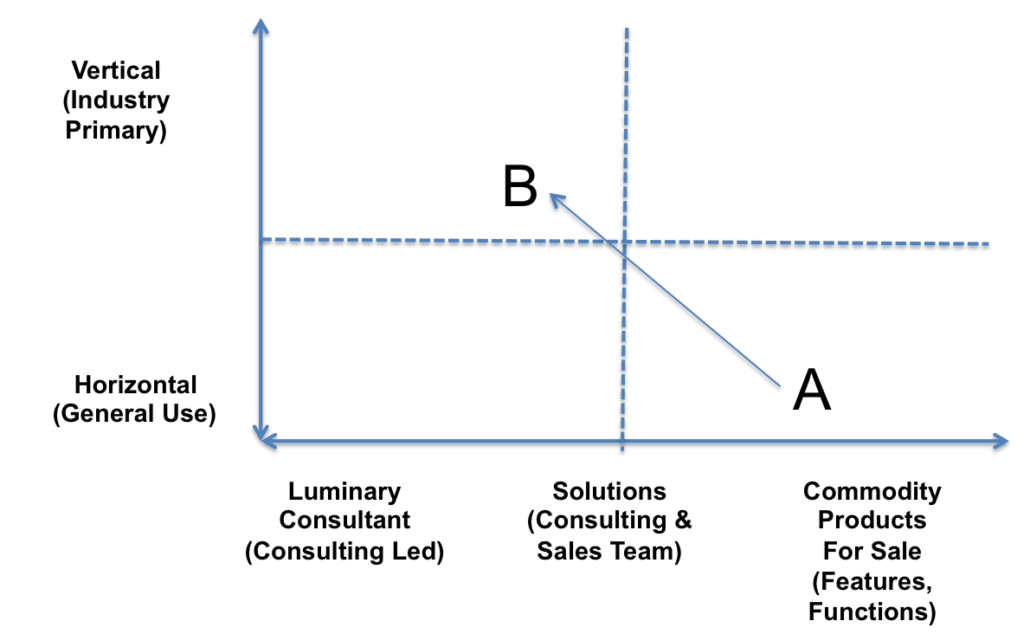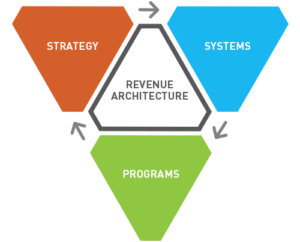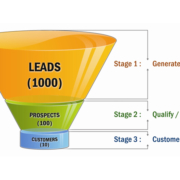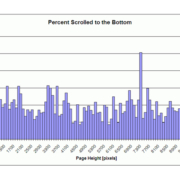A Revenue Architecture defines the building blocks for Revenue growth. You can think of the Revenue Architecture as a Sales and Marketing Operating Model. It is critical that the revenue architecture is designed and deployed to directly align with the business strategy and business model.
Business Models Change Along A Continuum
In pursuit of greater margins (by moving to higher value products and services) or greater scale (by moving toward a more standardized products and bigger markets) a businesses will adjust strategy and business models. The diagram below depicts a simple set of axis that firms generally move along in their go-to-market approach.

Business Model Continuum
Yet, we often see that firms who decide to change their business model approach fail to align sales and marketing – their revenue architecture – with the evolution of their business model. They don’t fully recognize or navigate the structural, people, power and politics and systems issues and they end up with a dysfunctional organization and suboptimized revenue performance.
A Case Study and What Went Wrong
Let’s explore an example. A firm is shifting their business model from A to B.
A technology product vendor seeks to reposition itself from a horizontal offering and geographic based organization to an industry vertical organization with an expert consultative approach. They want to drive specific industry use cases as the compelling reason for buyers to act.
No Problem. They asked each sales representative to pick an industry. 5 picked financial services, 10 health care, 3 retail, and no one selected energy & utilities (the firm had 4 named industry verticals).
So what could possibly go wrong? Here are 10 things:
- Marketing needed to support an industry approach, yet the investment burden became a political football, especially when the industry vertical did not carry a P&L.
- Revenue did not improve because the products did not really have unique advantage by industry. The value proposition essentially remained horizontal because marketing did not invest in new industry specific offerings.
- The sales team did not have consultative industry expertise, so applying their knowledge in a more industry consultative approach fell short.
- Industry teams were not aligned geographically, e.g. people with financial services knowledge were in Denver and not New York. Travel expenses soared and sales support resources were not timely.
- The firm now spent too much time trying to calculate the pipeline, revenues and reporting by industry versus geography, which wasted time and energy.
- Teamwork and collaboration waned. Sales people started to lack affinity. They once thought of themselves as a local geographic sales team. Now they found themselves alone in an office as the single representative to an industry, with nobody to collaborate with.
- The energy & utilities segment dried up. Nobody had chosen that vertical and no new hire requisition were approved to meet that gap.
- Marketing and partner channels were not correctly aligned with the new industry approach to market. Messaging to a new set of business buyers (more on the business side versus IT), sales tool-kits, the need for new campaigns and a revised partner ecosystem fell behind.
- The sales representative, who used to report to a geographic sales manager, now has a not well-defined dotted line accountability to a [titular] industry lead.
- Sales people defaulted to being lead generators, bringing in the industry experts (SME’s) to be the “real seller, losing valuable sales process skills.
Mind the Gap!! Changing business models means changing revenue architecture!
 Align Strategy
Align Strategy
Assuming the shift in the business model based on a sound business strategy, you will need a revenue strategy and operating model that works with it. Subtleties often arise and you must try and resolve them early.
- Align branding with market positioning
- Re-segment target markets
- Redefine value propositions
- Re-build the revenue conversion model
- Identify the strategies needed to access the market.
Align Systems
Organizational dynamics will change and you need a new system to execute marketing and sales effectively. A Revenue System is the ‘engine’ for growth. Systems include the organization, process and technology for marketing and sales. You will need to execute marketing and sales in a way that fits with your place on the business model continuum.
- Build the right sales collateral, assets and tools
- Adjust your operating model to redefine the sales process and metrics
- Re-align your organization and channels and refit with the right skills
- Establish your new positioning on across all your channels
- Support the new structure with the right set of enabling technology
- Align the performance management and incentive process.
Align Programs
Revenue execution varies tremendously across the business model continuum. The Luminary consultant will be a “seller, doer and marketer”. PR will play a bigger role, speaking and thought leadership will be critical. On the other end of the continuum, commodity products will require strong and consistent brand advertising and promotion program. Salespeople and teams will be highly structured and consistent.
- Restructure your demand generation programs and content marketing
- Define the new revenue funnel and the inbound marketing and outbound marketing mix
- Define the selling skills and ‘sales DNA’ that fit with the new model, e.g. sales-led vs consulting-led
- Measure and optimize your conversion processes from lead to close.
These are just a few of the critical success factors needed to align a revenue architecture with a business model change. To fully address the challenge, you must understand the specific structures needed for the target business model and the gaps from where you are today. You must consider all the dimensions of a world-class revenue architecture.











Leave a Reply
Want to join the discussion?Feel free to contribute!